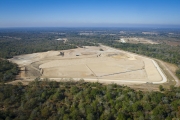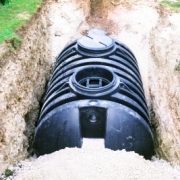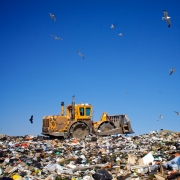LEED Silver-Certified Landfill: The First of Its Kind
Throughout the last 10 years LEED (Leadership in Energy and Environmental Design) has developed into an efficient and effective solution for building owners to reduce expenses and limit the environmental impact of their buildings. Although many LEED projects take the form of typical commercial, institutional, government, and healthcare facilities, LEED provides many other sectors the ability to differentiate and produce a truly rare project, none more so than the Twin Oaks Landfill in Grimes County, Texas, which achieved LEED Silver certification.



